Transmission Repair Specialists in West Jordan, Utah
Is your vehicle experiencing transmission troubles? We're transmission repair geniuses! We guarantee we can fix your transmission and get you up and running in no time.
READ MORE -
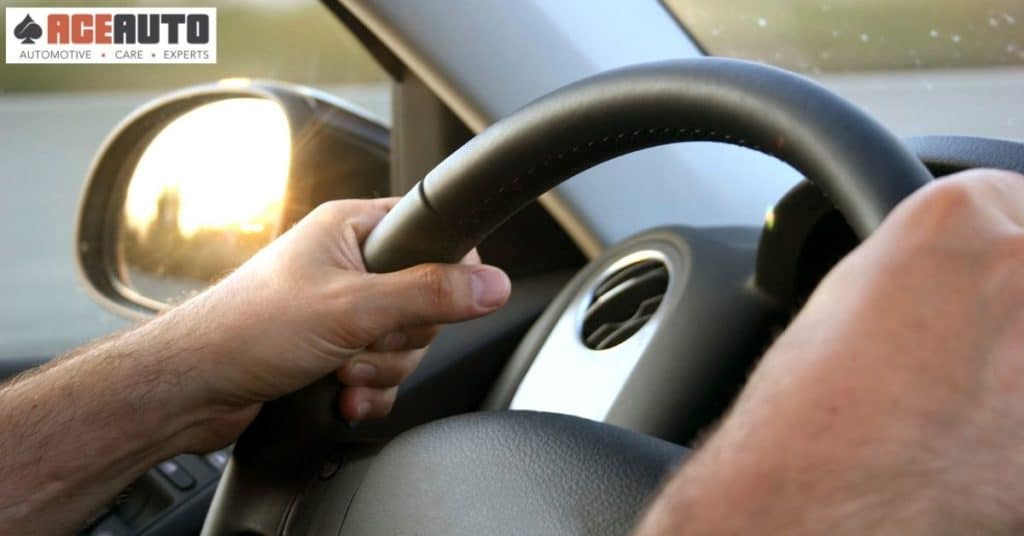
While steering problems can give you a headache, it is important to know the root of your problem. Your steering problems could be due to suspension system issues, bad tires, or other issues that have nothing to do with your steering system. But it could be the steering system, which is why it is so important to correctly diagnose the problem. It is important to fix steering issues as quickly as possible because driving with these problems can lead to an accident or an injury. If you live in Utah, visit Ace Auto in West Jordan and receive affordable service from experienced mechanics.
No matter what the cause or signs of steering problems, whether it is power steering problems or electric power steering problems, it is essential that you take your vehicle to a certified, experienced mechanic to fix the issue. Driving a car with power steering issues could lead to accident or injury. Give Utah’s trusted mechanics at Ace Auto a call today at 801-803-6016 to schedule an appointment and get a free repair quote!
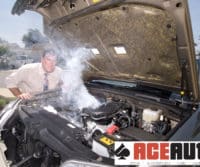

There's nothing worse than driving down the road and having your car overheat. Seeing steam coming from under the hood while red warning lights start to flash on your dashboard can get any driver's blood pumping. That's why it's a good idea to know why your car can overheat and what to do when and if it does.
There are many reasons your car may overheat. When your car overheats, it means that something is making it difficult for your vehicle's cooling system to do its job. Here are three of the most common overheating engine causes:
Regardless of your engine overheating reasons, once it does, you need to take a few steps to ensure your safety and to keep your car from suffering additional damage.

From overheated engines to engine rebuilds and even AC recharging, here at Ace Auto Repair Utah, we can handle any vehicle repairs you may need. Our team of trained professionals makes it their mission to get you and your vehicle back on the road as soon as possible. So, if you are in the Salt Lake City area, know that we can service any make or model car or truck, and we're here to help. Give Ace Auto Repair in West Jordan a call today at: (801) 803-6016 if you need your car or truck towed, or contact us to schedule an appointment.


Ace Auto Repair is excited to announce that we have officially moved to a new and improved automotive shop, conveniently located in West Jordan. Our new facility has more space in the shop for using the latest state-of-the-art equipment in auto repair. We also have more parking for the customers and perhaps best of all, you no longer have to travel down a bumpy dirt road to get to us.
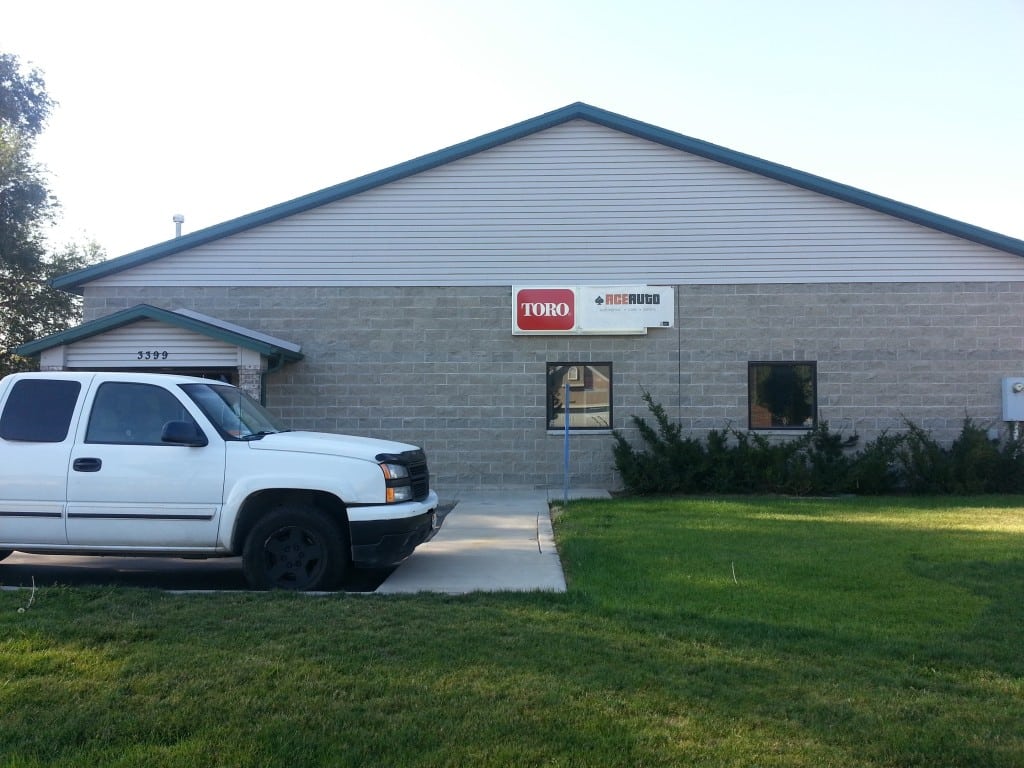
Ace Auto's New Address is:
Ace Auto Repair
3399 West 8395 South
West Jordan, UT 84088
Although our address has changed, our commitment to quality auto repair services at honest, affordable rates has not. If you are in the area, we would love for you to stop by for a visit.
Here at Ace Auto, we pride ourselves on honest and reliable engine repair. We do not tell a customer to fix something that does not need to be fixed, we always keep them informed through the entire process, and will not perform any work without consent.
To experience the Ace Auto Repair difference for yourself, give us a call at 801-803-6016 today!

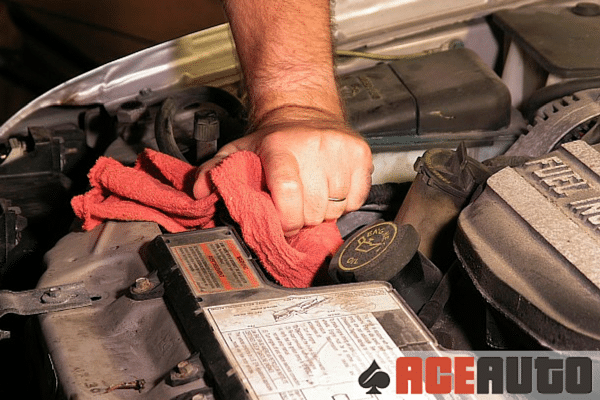
The radiator is one of those parts of your car that works quietly away without you every noticing…until it breaks, and then you really notice. This reservoir holds water and antifreeze to help keep your engine in tip-top condition. Engines create a ton of heat when they operate (and friction, but that's a whole other issue), and that heat can quickly destroy them unless it's cooled down. Enter the radiator, which draw heat away from your engine and protects your car from other temperature-related problems, like freezing during an especially cold night freeze.
However, radiators don't run perfectly forever. Their contents can grow old and contaminated, which leads to problems. This is where radiator flushing can prove especially helpful.
Antifreeze, engine coolant, and all related liquids run in constant cycles through an enclosed system, so they can last a long time. However, constant exposure to your engine does take its toll. Over time, coolants grow contaminated with other particles and stop working as well, eventually endangering your engine with overheating and corrosion issues.
A coolant flush simply cleans out your radiator system and replaces all your coolant with a new version. Generally it takes place in several steps. The old coolant is completely pumped out, a cleaner is pumped into the system to help clean it up, and then new coolant is added.
Go too long without a radiator flush, and your engine could destroy itself from the inside out, overheating and causing that dreadful scenario where you are stranded by the side of the road with smoke or steam pouring out of your hood. But there's a lot of other pertinent benefits too, including:
It can depend, so your owner's manual will have the most accurate information on when you should get a flush. For most cars, it's around 50,000 miles because it takes time for your coolant and antifreeze to develop problems, but they are affected by temperatures and driving habits as well as time, so some people may benefit from getting a flush more frequently.
Take your car into Ace Auto Repair for a coolant flush, and you will get the ASE certified treatment that you deserve. Our technicians can offer free repair quotes for any problems that they encounter, and use mobile diagnostic testing for quick results. All work guaranteed with us, so take a visit to our website and see how you can schedule a coolant flush.


Here at Ace Auto Repair, we want you to know the 5 signs of worn brakes. We like our customers to feel safe and secure in their vehicle. By knowing what to look and listen for, you could save money by catching small problems with your brakes before they become an even bigger problem.
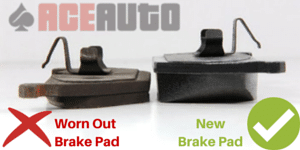 Worn Brake Pads
Worn Brake PadsMost cars use what are known as disc brakes. A hydraulic system filled with brake fluid triggers a set of pads that clamp down on the cars calipers, which causes them to squeeze together on a disc known as the rotor. The friction that occurs between the pads and rotor eventually stops the car. Over time, as you can imagine, the pads will begin to wear thin, which means they'll become less effective at slowing and stopping your car. To check the thickness of your brake pads, all you need to do is look between the spokes of your wheel to spot the shiny metal rotor inside. When you find it, look around the outer edge where you'll see the metal caliper. Between the caliper and rotor, you'll see the pad. You'll have to estimate, but generally, your pads should be at least one-quarter of an inch thick. If they're any thinner than that, it's a good idea to get them changed. If your car wheel isn't designed in such a way that you can see through the spokes, you'll have to remove the tire to see the rotor and pads. In either case, while you're looking, it's also a good idea to inspect the rotor itself. It should be relatively smooth. If you see any deep grooves or pits, it might also be time to replace that, as well.
 One of the warning signs that your brakes need servicing can come from a small indicator in your braking system that emits a high-pitched squeal when your pads need replacing. In addition to the squeal from the sensor, you'll also want to listen for a harsh grinding sound. This means that you've gone completely through your brake pads and now, when you apply the brakes, the metal of the calipers is grinding against the metal of your rotors. Not only is this an ineffective way to stop your car, chances are good that you'll also damage your rotors, thus turning a relatively easy and inexpensive pad job, into a more costly rotor resurfacing or replacement ordeal. Remember each brake pad comes equipped with a wear indicator that squeals when your pads need replacing.
One of the warning signs that your brakes need servicing can come from a small indicator in your braking system that emits a high-pitched squeal when your pads need replacing. In addition to the squeal from the sensor, you'll also want to listen for a harsh grinding sound. This means that you've gone completely through your brake pads and now, when you apply the brakes, the metal of the calipers is grinding against the metal of your rotors. Not only is this an ineffective way to stop your car, chances are good that you'll also damage your rotors, thus turning a relatively easy and inexpensive pad job, into a more costly rotor resurfacing or replacement ordeal. Remember each brake pad comes equipped with a wear indicator that squeals when your pads need replacing.
 Has your car ever felt like your car has a mind of its own? As if it wants to make right or left hand turns while driving or braking? If so, this could indicate a problem with the braking system. The cause of this pulling might be a stuck caliper. Because such a scenario would cause friction on one wheel and not the others, your car can pull to the side where the caliper is stuck. Two other brake-related scenarios that could cause a car to pull would be a collapsed brake hose that would cause your calipers to move unevenly when applying the brakes, or uneven brake pads, which would also apply different amounts of pressure to different wheels. Pulling, however, doesn't always indicate a problem with the brakes. The cause could also come from unevenly inflated or worn tires, poor alignment or a problem with your vehicle's suspension. This is why, if your car begins to pull, you may want to pull up to the Ace Auto Repair and have our ASE technician do a full checkup on the problem.
Has your car ever felt like your car has a mind of its own? As if it wants to make right or left hand turns while driving or braking? If so, this could indicate a problem with the braking system. The cause of this pulling might be a stuck caliper. Because such a scenario would cause friction on one wheel and not the others, your car can pull to the side where the caliper is stuck. Two other brake-related scenarios that could cause a car to pull would be a collapsed brake hose that would cause your calipers to move unevenly when applying the brakes, or uneven brake pads, which would also apply different amounts of pressure to different wheels. Pulling, however, doesn't always indicate a problem with the brakes. The cause could also come from unevenly inflated or worn tires, poor alignment or a problem with your vehicle's suspension. This is why, if your car begins to pull, you may want to pull up to the Ace Auto Repair and have our ASE technician do a full checkup on the problem.
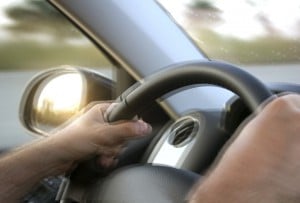 If your brake pedal pulses under normal braking circumstances, you could have a problem. Generally, a vibrating brake pedal indicates warped rotors. Their uneven surfaces will thrum against the brake pads, and you'll feel the feedback through the brake pedal. Rotors usually only warp when they're under extreme stress for an extended period. The friction-generated heat caused by driving down steep mountainsides or by stopping frequently while towing something heavy, can cause the metal of the rotors to change shape. If you haven't stressed your brakes recently, but you still feel vibration in the pedal, it may be best to take it in for a diagnostic test.
If your brake pedal pulses under normal braking circumstances, you could have a problem. Generally, a vibrating brake pedal indicates warped rotors. Their uneven surfaces will thrum against the brake pads, and you'll feel the feedback through the brake pedal. Rotors usually only warp when they're under extreme stress for an extended period. The friction-generated heat caused by driving down steep mountainsides or by stopping frequently while towing something heavy, can cause the metal of the rotors to change shape. If you haven't stressed your brakes recently, but you still feel vibration in the pedal, it may be best to take it in for a diagnostic test.
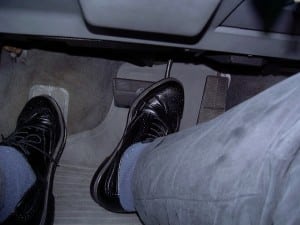 In addition to thrumming, your brake pedal can give you other indications that your car's braking system might need examining. A mushy pedal, one that goes practically to the floor before engaging the brakes, could indicate worn pads or a problem with the hydraulic system, such as air in the line, an air leak, or a brake fluid leak. To check for a fluid leak, put an old white sheet or piece of light cardboard under the car overnight. In the morning, examine any fluid that collects. Brake fluid will be practically clear and the consistency of cooking oil. The opposite of a mushy pedal is one that causes the brakes to grab immediately at the slightest touch. This could indicate an unevenly worn rotor, dirty brake fluid, or contamination of the fluid by moisture. You can solve such a problem with a relatively inexpensive change of fluid.
In addition to thrumming, your brake pedal can give you other indications that your car's braking system might need examining. A mushy pedal, one that goes practically to the floor before engaging the brakes, could indicate worn pads or a problem with the hydraulic system, such as air in the line, an air leak, or a brake fluid leak. To check for a fluid leak, put an old white sheet or piece of light cardboard under the car overnight. In the morning, examine any fluid that collects. Brake fluid will be practically clear and the consistency of cooking oil. The opposite of a mushy pedal is one that causes the brakes to grab immediately at the slightest touch. This could indicate an unevenly worn rotor, dirty brake fluid, or contamination of the fluid by moisture. You can solve such a problem with a relatively inexpensive change of fluid.
If you are experiencing issues with your car or trucks brakes, visit to Ace Auto Repair Utah for a diagnostic check. We guarantee all of our work and promise to get your vehicle up and running in no time. Call 801-803-6016 or visit us online at AceAutoUtah.com.
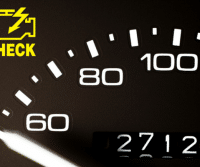
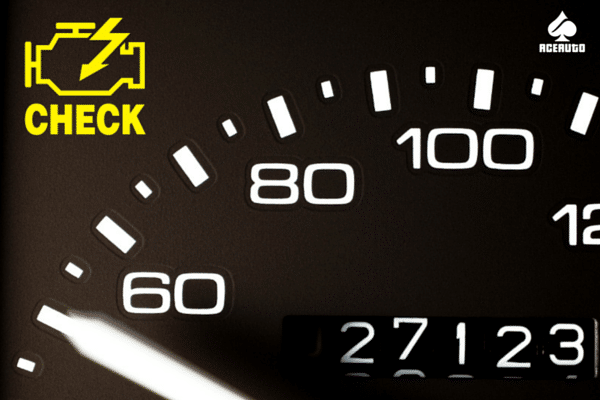
You might be driving at full speed on the highway or cruising through town when you notice the check engine light in your dash has come on. The car seems fine and you might be tempted to ignore the warning light. What is the check engine light? Why does the check engine light come on?
The Check Engine light, formally known as the Malfunction Indicator Lamp (MIL), is a signal from the car's engine computer that something is wrong. A federal government mandated on-board diagnostics (OBD) for all passenger cars sold in the United States, a check engine light is different than "service required" light which simply means it’s time for an oil change or air filter check. While increases in repair costs might cause consumers to postpone vehicle repairs, doing so is a bad idea. The reasons a check engine light is on range from a damaged gas cap to a bad sensor. The repairs may not be as costly as you fear.
A loose or damaged gas cap is the least expensive, yet very common, problem that can cause your service engine soon light to come on. Loose or damaged gas caps result in millions of gallons of evaporated fuel each year across the nation. If you notice the check engine light going on and off, try tightening or even replacing the gas cap. The low average repair costs show that simply tightening the cap usually solves the problem.

A failed O2 sensor is the most common cause of a flashing check engine light. The O2 sensor is a critical part of the exhaust system, monitoring how much unburned oxygen is exiting the engine in the exhaust. The sensor sends messages back to the engine to adjust the mix of oxygen and fuel being used. A faulty O2 sensor will result in reduced fuel economy and can take a toll on the catalytic convertor. Replacing the O2 sensor will protect critical engine systems and keep your vehicle running at peak fuel efficiency.
The catalytic converter is a rugged component of the overall exhaust system. Generally, catalytic converter repair is a secondary underlying program that is ignored for too long, such as a failed spark plug. A more costly repair because of the precious metals used in its construction, replacing catalytic converters represented just 6.1% of repairs in 2013.
The mass air flow sensor calculates the amount of fuel needed to mix efficiently with the oxygen in the engine. A malfunctioning sensor will lower fuel economy up to 25 percent. Having it replaced by your mechanic will cost an average of $423.00 but will make it up to you in savings at the pump.
Can spark plugs cause check engine light to flash? Absolutely! A fouled spark plug can cause the engine to misfire. Replacing the spark plugs in a timely manner will be a relatively small expense. The cost to replace spark plugs varies significantly based on the type of car you have and where you take your car. Cars have differing numbers of spark plugs and the accessibility of the spark plugs will affect the labor rate as some cars may be designed in a way that makes the spark plugs harder to reach. Cars like a BMW will be on the higher end, and cars like a Toyota Corolla will be on the lower end. If the problem is ignored, the damage can spread to the spark plug wires, catalytic converter, or ignition coils causing a more costly repair.
Local parts stores can check engine codes for free, but this will just give you an error code, and it just the beginning of the diagnostic process. You can buy a home diagnostic machine yourself, however, you would need to know how to read it.
Ace Auto Repair in West Jordan Utah provides expert diagnostics with written estimates. Many people ignore warning lights if the car still seems to drive the way it used to, however, a check engine light is a red flag that something in your vehicle is amiss. If you see the check engine light flashing and you don’t take care of it immediately, you are putting your car at risk for costlier future repairs and malfunctions.

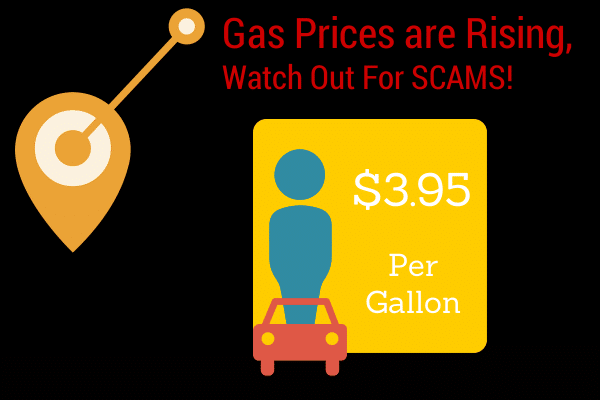
Gas prices are reaching all-time highs. So too is the volume of advertising for "gas-saving" products, designed to appeal to consumers looking for ways to improve fuel efficiency. Although there are practical steps car owners can take to increase gas mileage, the Better Business Bureau warns consumers to be wary of gas-saving claims for automotive devices or oil and gas additives. While some of the gas-saving products have been proven to work, the savings are small, at best. What’s more, you could end up with serious engine problems or a voided manufacturer warranty by adding after-market devices to your engine. The BBB recommends being particularly skeptical of the following kinds of advertising claims:
Instead of searching for miraculous gas-saving products, the BBB recommends that consumers consider taking one or more of the no-cost or low-cost actions that can help drivers save on gas consumption. The most important place to start is at the gas pump; buy only the octane level gas you need. Check your owner's manual to determine the right octane level for your car. Here are more tips from the BBB to help you get better gas mileage:
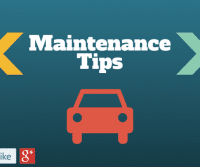
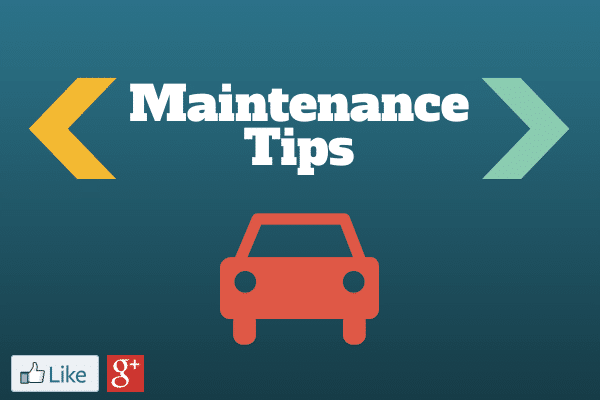
Recent Comments